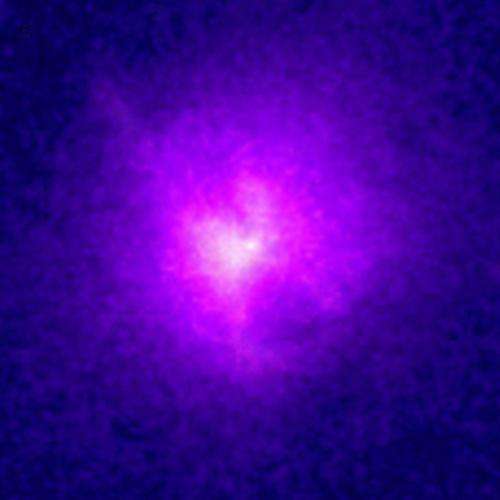Fifteen years of NASA's Chandra X-ray observatory

This Chandra X-ray Observatory image of the Hydra A galaxy cluster was taken on Oct. 30, 1999, with the Advanced CCD Imaging Spectrometer (ACIS) in an observation that lasted about six hours.
Hydra A is a galaxy cluster that is 840 million light years from Earth. The cluster gets its name from the strong radio source, Hydra A, that originates in a galaxy near the center of the cluster. Optical observations show a few hundred galaxies in the cluster. Chandra X-ray observations reveal a large cloud of hot gas that extends throughout the cluster. The gas cloud is several million light years across and has a temperature of about 40 million degrees in the outer parts decreasing to about 35 million degrees in the inner region.
NASA's Chandra X-ray Observatory was launched into space fifteen years ago aboard the Space Shuttle Columbia. Since its deployment on July 23, 1999, Chandra has helped revolutionize our understanding of the universe through its unrivaled X-ray vision. Chandra, one of NASA's current "Great Observatories," along with the Hubble Space Telescope and Spitzer Space Telescope, is specially designed to detect X-ray emission from hot and energetic regions of the universe.
Provided by NASA



















